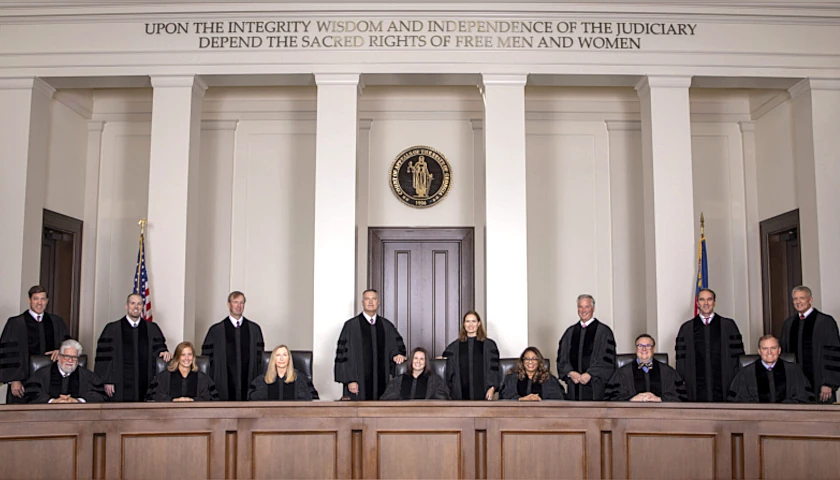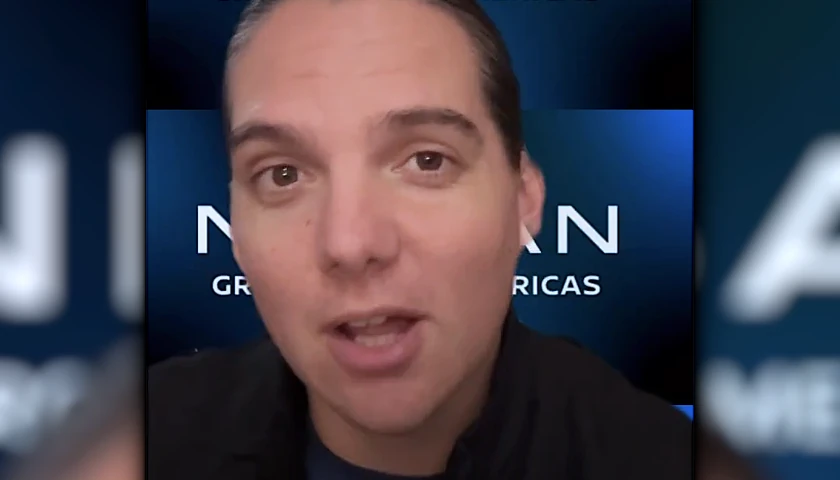Arizona voters will choose whether to retain 69 judges up for retention election this fall, the bulk from the Maricopa County Superior Court.
The Arizona Sun Times worked with a team of researchers and insiders, including grassroots activist Linda Busam, to produce a report informing voters on the partisan leanings and contentious decisions from 48 of those judges. Voters angry with judges who found ways to dismiss election lawsuits challenging corruption in the 2020 and 2022 elections have vowed to boot those judges out of office. County officials begin mailing early ballots on October 9.
Only four of Arizona’s 15 counties hold retention elections for judges, along with the Arizona Supreme Court and Arizona Court of Appeals. The judges are initially appointed by the governor and then run for retention every few years. In contrast, superior court judges in the remaining 11 counties must run for election initially, and they are not appointed in every election after that.
Critics of the retention election system contend that since the judges don’t initially run for office, no one learns much about them, so it is difficult to ascertain information about them for their retention elections. They don’t bother putting up campaign websites. As a result, barely over a handful of judges have been voted out of office since Arizona adopted the retention system in the 1970s.
However, progressive activists have become more organized recently; three Maricopa County Superior Court judges appointed by Republican governors were voted out in 2022.
Progressive activists are targeting two conservative justices on the Arizona Supreme Court for defeat this fall, Clint Bolick and Kathryn King, due to the state Supreme Court’s decision upholding Arizona’s old law banning most abortions after Roe v. Wade was reversed.
In response, the Arizona Legislature referred Proposition 137 to the ballot, which would negate any vote to remove the two justices. It would also eliminate retention elections for Arizona Supreme Court and superior court judges, replacing them with terms of good behavior unless decided otherwise by a judicial review commission. This would undermine Democratic Governor Katie Hobbs’ ability to replace any judge who loses their election or who retires.
The Arizona Commission on Judicial Performance Review (ACJPR) issues reports on judges and recommends whether to retain them. However, it rarely recommends not retaining a judge—it recommends retaining all 69 judges. ACJPR surveys people who interact with each judge about their legal ability, integrity, communication skills, judicial temperament, administrative performance, and settlement activities. ACJPR doesn’t discuss their contentious decisions or partisan leanings, so most voters ignore their reports.
A bipartisan site called Arizonans for an Independent Judiciary recently launched, but it also recommends retaining all 69 judges, apparently relying on ACJPR and provides no information about them.
The Robing Room is a national site where voters can look up information from litigants on judges nationwide. However, the litigants’ posts are mostly complaints regarding their personal cases, which are usually family law cases, providing little to no information about judges’ partisan views and decisions.
The Sun Times’ report on the judges — two Arizona Supreme Court justices, four Arizona Court of Appeals justices, and 42 Maricopa County Superior Court judges — color-coded each judge either bright red, dark red, bright green, or dark green.
Bright red means a very partisan judge who issues progressive decisions.
Dark red means a judge who has some of those tendencies or other problems.
Bright green means a judge who isn’t biased toward progressives and issues fair decisions.
Dark green generally means a judge who appears to be somewhat fair.
Since Hobbs will appoint replacements for any judges who aren’t retained — unless Prop. 137 passes — many voters may choose to retain all but the very worst judges.
Conservative voters frequently complain about judges who were appointed by Republican governors but ruled like Democrats on the bench—The Sun Times discovered that some of these judges changed their voter registration to Republican immediately before their appointments.
Twelve judges — 11 from the Maricopa County Superior Court and one from the Arizona Court of Appeals — were labeled bright red.
Insiders told The Sun Times that Judge John Hannah is considered the worst Democrat on the bench. He refused to let former gubernatorial candidate Kari Lake look at ballot affidavits, said offensive things about election fraud concerns, and blocked her witnesses from testifying. He sanctioned the Arizona Republican Party for an election lawsuit, which was overturned. He fined election integrity investigator Cyber Ninjas $50,000 per day for not turning over records he claimed were public records, even though the company is a private entity.
Similarly, Judge Michael Kemp, also marked bright red, ruled that Cyber Ninjas must turn over records as public records, even though they’re private. Another decision by Kemp was refusing to let prosecutors seek the death penalty against an illegal immigrant who killed a store clerk.
Judge Tim Ryan rejected the Republican Party’s request to extend polling hours after problems with voting tabulators due to printer settings in the 2022 election. He was biased against prosecutors, especially regarding Proposition 100 illegal immigration cases, that conservative former Maricopa County Attorney Andrew Thomas unsuccessfully tried to get him removed from all of his cases.
He is considered a radical progressive like his brother Tom Ryan, who conservative attorneys refer to as the worst progressive attorney in Arizona. Tim Ryan recused himself from an election case after his brother called litigants Senator Warren Petersen (R-Mesa) and House Speaker Ben Toma (R-Peoria) names. He denied a request from Republican state lawmakers to block a voter-approved law on transparency in campaign financing.
The Arizona Supreme Court reversed Judge Joseph Mikitish’s ruling that the radical progressive Free and Fair Elections proposition qualified for the ballot. He granted a temporary shutdown of a Scottsdale gym for violating COVID-19 orders.
Judge Bruce Cohen, also marked bright red, presides over Attorney General Kris Mayes’ prosecution of the 2020 alternate Republican electoral slate for president. If he is voted out of office, the case will be transferred to another judge.
Six judges received bright green color coding for their excellent performance. Judge Christopher Coury allowed the Senate’s 2020 audit of the election to go ahead. He rejected a progressive attempt to get three elected officials thrown off the ballot due to their association with January 6. He tossed Proposition 208, which would have raised income taxes, off the ballot in 2020. Democrats launched an unsuccessful revenge campaign against him in 2020.
Both Bolick and King received bright green coding due to multiple pro-freedom decisions. In Matthews v. Industrial Commission, Bolick wrote a majority opinion embracing textualism as the proper method of constitutional interpretation, echoing the approach applied by Supreme Court justices such as Antonin Scalia and Clarence Thomas.
In Harold Vangilder v. ADOR/Pinal County, King authored the majority opinion, holding that Arizona law does not permit the county to adopt a two-tiered retail transaction privilege tax on personal property as part of a transportation excise tax. Thus, the county’s new two-tiered retail transaction privilege tax is unlawful and invalid.
The CONELRAD Group, an election integrity think tank in southern Arizona, is reviewing 16 judges in Pima County and four in Pinal County up for retention election. Their report is expected in a few days.
Methodology
In order to compile these reviews, The Sun Times took three angles:
– Spoke with insiders who either litigated in front of the judges, including prosecutors or worked as judges alongside them.
– Reviewed judges’ voter registration history. The Republican Party has agreements with local governments to obtain this information. Each state has different laws on what the data can be accessed for.
– Researched each judge’s “digital footprint” and appearances in news coverage. Each judge’s official page provides some information, and Ballotpedia and Trellis provide some. Some of the judges have LinkedIn pages, too.
– – –
Rachel Alexander is a reporter at The Arizona Sun Times and The Star News Network. Follow Rachel on Twitter / X. Email tips to [email protected].








